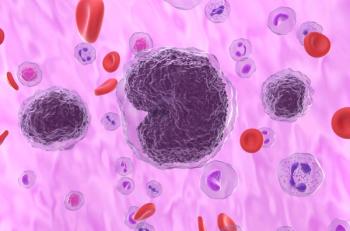
Text Messages Help More Lose Weight in Diabetes Prevention Program, Study Finds
The study, while small, suggests a scalable solution that would allow payers address diabetes prevention and health disparities.
The Diabetes Prevention Program (DPP) has withstood scrutiny in clinical trials, but what if it could be even better?
A study published today in Diabetes Care shows that adding a daily text message to other program elements gave participants an added boost. That helped more of them achieve clinically meaningful weight loss, with modest improvements in glycated hemoglobin (A1C) and systolic blood pressure.
According to the study’s lead author Henry H. Fischer, MD, of the Denver Health and Hospital Authority, the messages were standardized and sent once a day, except on Sundays. A group of 163 patients were randomized into intervention and control groups; all consented to receive the DPP program but half (82) received text messages adapted from the DPP program. All had a body mass index between 25 and 50 kg/m2 and A1C between 5.7% and 6.4 %.
After 12 months, 21.5% in the control group achieved at least 3% weight loss, compared 38.5% in the text-message group. Notably, text messaging produced significant results for patients in both English- and Spanish-speaking interventions, which could suggest solutions for dealing with health disparities. Studies have shown that while low-income households may lack a landline or a computer, almost everyone has a cell phone.
While Fischer said in an email that ideally, messages could be customized, the fact that an intervention based on standardized messages produced significant results could be good news for payers, because it suggests this method could be highly scalable. Noting the small size of their study, the authors suggest this might be an area for future research. “A yet unanswered question is whether the text message support approach can be operationalized outside of a study setting to reach large numbers of patients and remain clinically effective at low cost,” they write.
Significantly, Fischer said in an email to The American Journal of Managed Care that participants had positive responses to text messaging, which the authors plan to describe in a future paper.
Spanish Speakers Lose More Weight
Overall, results showed that those receiving text messages lost more than those taking part in DPP alone, but the Spanish speakers fared better than the English speakers. Among the English-speaking participants, results after 12 months showed that among those receiving the text messages, 22% achieved weight loss of at least 3% and 11% achieved weight loss of at least 5%. Among English speakers taking part in the DPP alone, 22% lost at least 3% of their weight and 13% lost at least 5%. The average age of the English speakers in the intervention group was 47.5 years; in the control group, 47.9 years.
Among the Spanish speakers receiving text messages, 47% lost at least 3% of their weight, and 24% lost at least 5%. Among those in the Spanish-speaking DPP program without text messages, 21% lost at least 3% of their weight and 15% lost at least 5%. The average age of the Spanish speakers in the intervention group was 47.9 years; in the control group, 41.9 years.
Reductions in A1C
Along with weight loss, the text message intervention produced A1C benefits, although these were more modest. Overall, among those receiving text messages, 22% saw a reduction in A1C and only 6% saw an increase; in the control group, only 7% saw a reduction in A1C while 18% saw an increase.
There was divergence between the English and Spanish speakers: Among the English speakers in the intervention, 10% saw a reduction in A1C and 5% saw an increase; among the Spanish speakers in the intervention, 29% saw a reduction in A1C while 7% saw an increase. Spanish speakers in the control group included 4% who had an A1C reduction and 29% who had an increase. Among English speakers in the control group, 10% had an A1C reduction and 10% had an increase.
DPP and Reimbursement
The DPP has been shown to prevent or delay type 2 diabetes in patients with
Since last spring, the CDC, American Medical Association, and the American Diabetes Association is heavily promoting the DPP as a way to stop the rise of full-blown diabetes, saying the cost to the healthcare system is not sustainable. Part of the effort has been aimed at encouraging payers to fund the DPP. An estimated 86 million Americans have prediabetes; an adult with a fasting plasma blood glucose in the 100-125 mg/dl range is defined as having impaired fasting glucose.
Reference
Fischer HH, Fischer IP, Pereira RI, et al. Text message support for weight loss in patients with prediabetes: a randomized clinical trial [published online February 9, 2016]. Diabetes Care. 2016; doi:10.2337/dc15-2137.
Newsletter
Stay ahead of policy, cost, and value—subscribe to AJMC for expert insights at the intersection of clinical care and health economics.













































